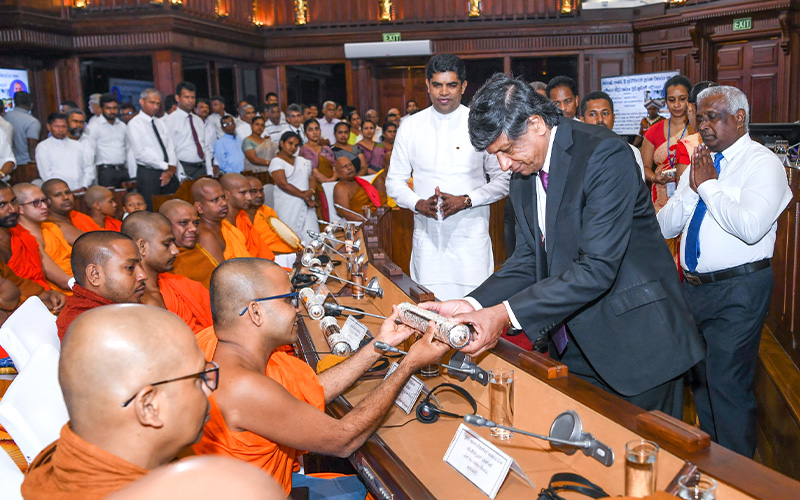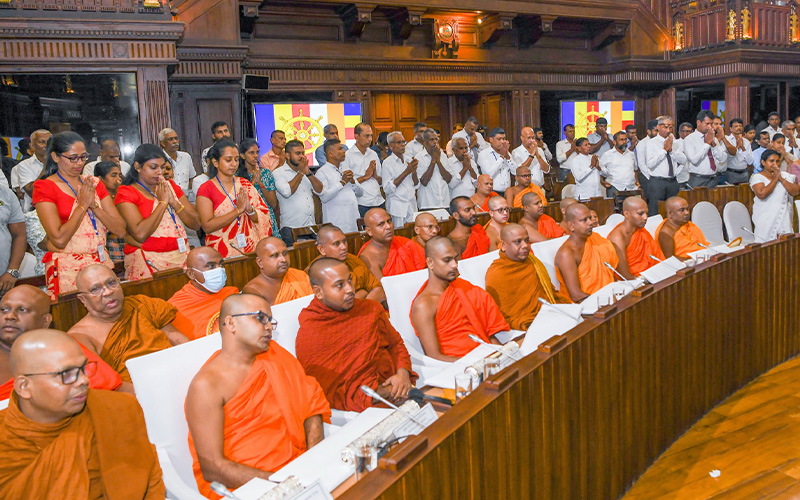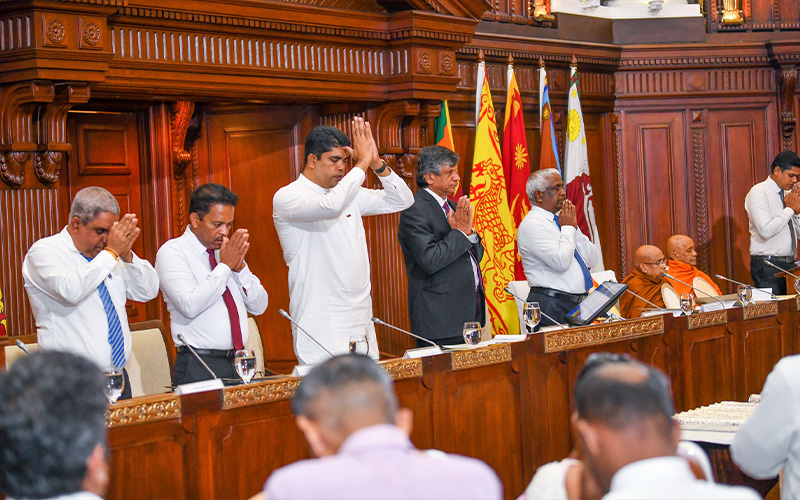
Sri Lankan president Ranil Wickremesinghe has committed to protecting and securing the 'Buddhist order' by declaring 11 Buddhist temples as 'sacred sites', of which four are in Tamil speaking areas.
At an event held at the Presidential Secretariat, the National Physical Planning Department submitted documents relating to the 11 temples that have some "archaeological or historical significance" to be declared as sacred sites in the government gazette.

Secretary to the President Saman Ekanayake who hosted the event reportedly reaffirmed Wickremesinghe’s "unwavering commitment to upholding and protecting Buddhism in accordance with the Constitution" and drew attention to other government iniatives "aimed at advancing Buddhism". The President Media Unit says that “the total count of sanctuaries recognised as sacred places of worship in Sri Lanka has now risen to 142.”

4 of the sites mentioned among the list of 11 are based in the Kuchchaveli Divisional Secretariat in the Trincomalee District. This includes the Sri Saddharma Yuktika Vana Senasuna (Monastery), Shanthi Viharya, Yan Oya Rajamaha Vihara and the Sagara Pura Samudragiri Vana Senasuna.
Last year Tamil Guardian reported the construction of a new temple in Pulmoaddai, in the Trincomalee District, where more than 25 soldiers and monks are seen tirelessly working to construct the Buddhist vihara. Their objective was to complete the project swiftly, despite accusations of illegal deforestation that preceded it.
Pulmoaddai, primarily inhabited by Tamil-speaking Muslims, lies within the Kuchchaveli Divisional Secretariat. Situated on the border of the Mullaitivu District, the town holds significant strategic importance as it connects the Northern and Eastern regions of the traditional Tamil homeland.

Residents from the area staged a protest in Iluppaikulam, condemning the construction of a new Buddhist temple in an area predominantly inhabited by Tamil people. The protestors raised questions regarding the necessity and purpose of building a Buddhist temple in a locality where there are no Sinhalese residents.
Since the end of the armed conflict in 2009, the Sri Lankan government have increased their efforts to colonise traditionally Tamil areas, particularly under the guise of 'archaeology'. As a result, non-Buddhist sites have been appropriated by Sinhala Buddhists, causing Tamils to lose access to these religious and cultural sites.
In 2018, the United National Party (UNP), pledged to build 1000 Buddhist viharas in the Tamil homeland.
The initiative was announced in a UNP manifesto on a page titled 'Reconciliation'.


